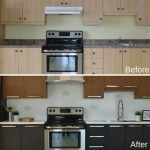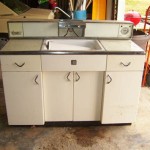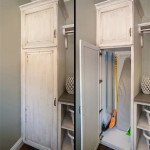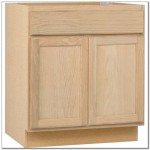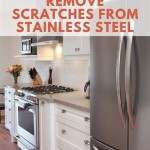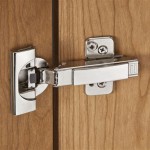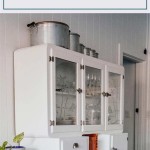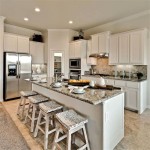Adjusting Soft-Close Kitchen Cabinet Doors: A Comprehensive Guide
Soft-close kitchen cabinet doors offer a touch of elegance and prevent slamming, contributing to a quieter and more peaceful kitchen environment. However, like any mechanical component, these mechanisms can require occasional adjustments to ensure optimal performance. This article provides a detailed guide on adjusting soft-close kitchen cabinet doors, covering various types of systems and common adjustment procedures.
Understanding Soft-Close Mechanisms
Soft-close mechanisms typically employ either hydraulic or pneumatic dampers. Hydraulic dampers use oil, while pneumatic dampers use air resistance to slow the door's closing speed. The adjustment process often involves fine-tuning the tension or resistance of these dampers. Familiarizing oneself with the specific mechanism installed on the cabinets is crucial for accurate adjustments.
Tools Required for Adjustment
Before beginning the adjustment process, gather the necessary tools. This typically includes a Phillips head screwdriver, possibly a flathead screwdriver depending on the hinge type, and potentially an Allen wrench for certain systems. Having the correct tools on hand will streamline the adjustment process and prevent unnecessary delays.
Identifying the Type of Soft-Close System
There are two primary types of soft-close systems: those integrated into the hinge and those installed separately as a damper. Integrated systems are more common in modern cabinets. Determining the specific system type will guide the appropriate adjustment procedure. Consulting the cabinet manufacturer's documentation can often help identify the system.
Adjusting Integrated Soft-Close Hinges
Most modern cabinets utilize soft-close hinges with integrated dampers. These hinges typically feature adjustment screws located on the hinge arm. These screws control the closing speed and the final latching action. Turning the screws clockwise usually increases the closing tension, while counter-clockwise decreases it. Small adjustments are recommended, testing the door's closing action after each adjustment.
Adjusting Separate Soft-Close Dampers
For cabinets with separate soft-close dampers, the damper unit is usually mounted on the cabinet frame or the door itself. These dampers often have adjustment screws or levers. Adjustments are typically made by turning a screw or moving a lever, modifying the damping force. Again, incremental adjustments and testing are crucial for optimal performance.
Troubleshooting Common Soft-Close Issues
Several common issues can occur with soft-close systems, including doors closing too quickly, too slowly, or not closing completely. These issues can often be resolved through proper adjustments. If adjustments do not resolve the problem, the damper or hinge might require replacement.
Dealing with Overly Aggressive Closing
If the door closes too aggressively, the damping force needs to be increased. Locate the adjustment screw or lever on the soft-close mechanism and adjust it accordingly. This will enhance the damping effect, resulting in a smoother, gentler closing action.
Addressing Sluggish Closing or Incomplete Closure
Conversely, if the door closes too slowly or fails to latch completely, the damping force needs to be reduced. Adjust the appropriate screw or lever to lessen the resistance, allowing the door to close more effectively. Minor adjustments are key to finding the right balance.
Maintaining Soft-Close Systems
To ensure long-lasting performance, regular maintenance of the soft-close mechanisms is recommended. Keep the hinges and dampers clean and free of debris. Lubricate the hinges periodically with a suitable lubricant to prevent sticking and ensure smooth operation.
Replacing Faulty Soft-Close Mechanisms
While adjustments can often resolve issues, sometimes the damper or hinge itself malfunctions and requires replacement. Replacing a faulty mechanism is generally straightforward and can be accomplished by removing the existing unit and installing a new one. Ensure that the replacement part is compatible with the existing cabinet hardware.
Safety Precautions During Adjustments
When working with hinges and dampers, exercise caution to avoid injury. Ensure the cabinet door is supported while making adjustments to prevent it from falling. Use the correct tools to prevent damage to the screws and mechanisms. Consulting the manufacturer’s documentation before making any adjustments is always advisable.
Seeking Professional Assistance
If you are uncomfortable making adjustments yourself, or if the issues persist after attempting adjustments, it is recommended to seek the assistance of a qualified cabinet installer or repair technician. They possess the expertise to diagnose and resolve complex issues effectively, ensuring optimal performance of your soft-close system.

Tec Soft Close Adjustment

How To Adjust Soft Close Hinges 7 Steps With Pictures Wikihow

How To Adjust Self Closing Kitchen Cabinet Hinges Maintenance

How To Adjust And Fix Hinges Step By Adjusting European

How To Adjust Soft Close Hinges 7 Steps With Pictures Wikihow

How To Adjust Cabinet Hinges Bob Vila

How Do I Adjust The Hinges On My Solid Oak Kitchen Cabinets Question Of Week 21 08 16 Wood Information Guides

How To Adjust Kitchen Cabinet Doors Checkatrade

Can You Convert Cabinets To Soft Close Authentic Custom Cabinetry

How To Adjust 3 Hinges Align Cabinet Doors
Related Posts

